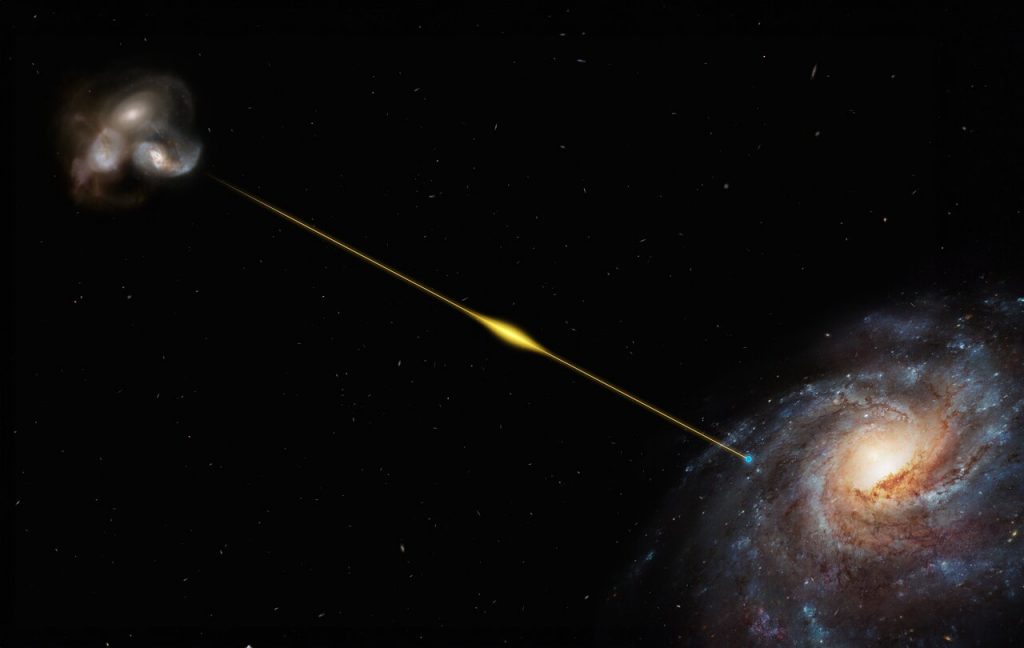An international team has discovered a distant burst of cosmic radio waves that lasts less than a millisecond. The Fast Radio Burst (FRB) is the most distant ever detected. The source of the signal was found with the help of the Very Large Telescope (VLT) of the European Southern Observatory (ESO) in a distant galaxy whose light takes eight billion years to reach us. The detected fast radio bursts are also one of the most energetic bursts ever observed, emitting in a fraction of a second an amount equivalent to the total energy emitted by our Sun in 30 years.
The explosion, named FRB 20220610A, was discovered last June by the Australian radio telescope ASKAP. “With the help of the ASKAP dishes, we were able to determine exactly where the eruption originated,” said Stuart Ryder, an astronomer at Macquarie University in Australia and co-author of the study published in the journal Science. “We then used the European Southern Observatory’s Very Large Telescope in Chile to search for the source galaxy and found that it is older and more distant than any other FRB found so far, and is likely located in a small cluster of merging galaxies.

This discovery confirms that fast radio bursts can be used to measure “missing” matter between galaxies, providing a new way to measure the mass of the universe.
Current methods for estimating the mass of the universe give conflicting answers and challenge the standard model of cosmology. “If you add up the amount of ordinary matter in the universe, the atoms that we’re all made of, more than half of it is missing,” said Ryan Shannon (Swinburne University of Technology, Australia), who also participated in the study. -He led the study. “We think the missing matter is hidden in intergalactic space, but it may be too hot and diffuse to be seen with conventional techniques.”
“Fast radio bursts detect this ionized matter. Even in almost empty space, they see all the electrons, and this allows us to measure how much matter exists between galaxies,” Shannon says.
Finding distant FRBs is key to accurately measuring the missing matter in the universe, as the late Australian astronomer Jean-Pierre (JP) Macquart showed in 2020. “JP showed that the greater the distance of a fast radio burst, the greater the spread of gas between galaxies. This is what It is now called the Macquart relationship. Some recent fast radio bursts appear to have broken this connection. “Our measurements confirm that the Macquart relationship applies to half the known universe,” Ryder said.
“While we still don’t know what causes these massive bursts of energy, the paper confirms that fast radio bursts are common events in the universe, and we will be able to use them to detect intergalactic matter and better understand the structure of the universe.” “Shannon says.
The result represents the limit of what can be achieved using telescopes today, although astronomers will soon have the tools to detect older and more distant explosions, determine the source of galaxies, and measure missing material in the universe. The International Square Kilometer Array Observatory is currently building two radio telescopes in South Africa and Australia, which will be able to find thousands of fast radio bursts, including those too distant to be detected with current instruments. ESO’s Very Large Telescope, a 39-meter telescope being built in Chile’s Atacama Desert, will be one of the few telescopes that will be able to study the source galaxies of the explosions even farther away than FRB 20220610A.
source: rain
comment






